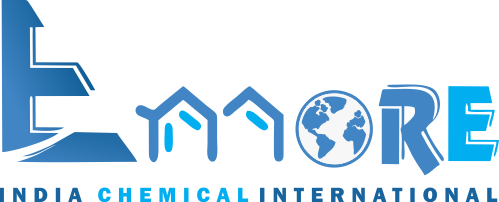Potassium chloride (KCl) supplier Distributor Manufacturer in chennai Taminadu india
Potassium chloride (KCl) is a metal halide salt composed of potassium and chlorine. It is odorless and has a white or colorless vitreous crystal appearance. The solid dissolves readily in water and its solutions have a salt-like taste. KCl is used as a fertilizer, in medicine, in scientific applications, and in food processing, where it may be known as E number additive E508.
In a few states of the United States it is used to cause cardiac arrest as the third drug in the "three drug cocktail" for executions by lethal injection. It occurs naturally as the mineral sylvite, and in combination with sodium chloride as sylvinite.
The version for injection is on the World Health Organization's List of Essential Medicines, the most important medications needed in a basic health system.
Uses
Fertilizer
The majority of the potassium chloride produced is used for making fertilizer, called potash, since the growth of many plants is limited by potassium availability. The two main types of potash are: Muriate of Potash (MOP, Potassium Chloride) and Sulphate of Potash (SOP, Potassium Sulphate). While SOP typically sells at a premium to MOP, the vast majority of potash fertilizer worldwide is sold as MOP.
Medical use
Potassium is vital in the human body, and potassium chloride by mouth is the common means to treat low blood potassium, although it can also be given intravenously. It can be used as a salt substitute for food, but due to its weak, bitter, unsalty flavor, it is usually mixed with ordinary table salt (sodium chloride) to improve the taste. The addition of 1 ppm of thaumatin considerably reduces this bitterness.[9] Complaints of bitterness or a chemical or metallic taste are also reported with potassium chloride used in food.
Industrial
As a chemical feedstock, it is used for the manufacture of potassium hydroxide and potassium metal. It is also used in medicine, lethal injections, scientific applications, food processing, soaps, and as a sodium-free substitute for table salt for people concerned about the health effects of sodium.
It is used as a supplement in animal feed to boost the amount of nutrients in the feed, which in turn promotes healthy growth in animals. As an added benefit, it is known to increase milk production.
It is sometimes used in water as a completion fluid in petroleum and natural gas operations, as well as being an alternative to sodium chloride in household water softener units.
Glass manufactures use granular potash as a flux, lowering the temperature at which a mixture melts. Because potash confers excellent clarity to glass, it is commonly used in eyeglasses, glassware, televisions and computer monitors.
KCl is useful as a beta radiation source for calibration of radiation monitoring equipment, because natural potassium contains 0.0118% of the isotope 40K. One kilogram of KCl yields 16350 becquerels of radiation consisting of 89.28% beta and 10.72% gamma with 1.46083 MeV.
Potassium chloride is used in some de-icing products that are designed to be safer for pets and plants, though these are inferior in melting quality to calcium chloride [lowest usable temperature 12 °F (−11 °C) v. −25 °F (−32 °C)]. It is also used in various brands of bottled water, as well as in bulk quantities for fossil fuel drilling purposes.
Potassium chloride was once used as a fire extinguishing agent, used in portable and wheeled fire extinguishers. Known as Super-K dry chemical, it was more effective than sodium bicarbonate-based dry chemicals and was compatible with protein foam. This agent fell out of favor with the introduction of potassium bicarbonate (Purple-K) dry chemical in the late 1960s, which was much less corrosive and more effective. It is rated for B and C fires.
Along with sodium chloride and lithium chloride, potassium chloride is used as a flux for the gas welding of aluminium.
Potassium chloride is also an optical crystal with a wide transmission range from 210 nm to 20 µm. While cheap, KCl crystal is hygroscopic. This limits its application to protected environments or short-term uses such as prototyping. Exposed to free air, KCl optics will "rot". Whereas KCl components were formerly used for infrared optics, it has been entirely replaced by much tougher crystals such as zinc selenide.
